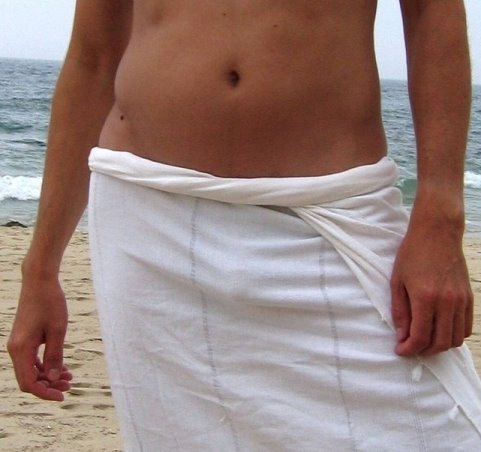The çaycı
Tea gardens—or çaybahçeler—can be found all over Istanbul and in towns and villages throughout Turkey. Many have an indoor component where younger men—women are conspicuously absent in what is still a predominantly gender-segregated society—gather around the television to watch football. The outdoor spaces afford a mostly older, backgammon-playing crowd shade and relative peace and quiet (away from the din of the television and agitated football fans).
 Scurrying along Istanbul’s crowded sidewalks are the teaboys. The çaycı (pronounced “chaïja”) can be seen carrying his delicate tea tray to and from shops and offices delivering tea and Turkish coffee. These lithe young men, who spend most of their days running to and fro, perform a graceful dance as they weave in and out among the pedestrians and shoppers.
Scurrying along Istanbul’s crowded sidewalks are the teaboys. The çaycı (pronounced “chaïja”) can be seen carrying his delicate tea tray to and from shops and offices delivering tea and Turkish coffee. These lithe young men, who spend most of their days running to and fro, perform a graceful dance as they weave in and out among the pedestrians and shoppers.
Turkish tea can be made at home, as all good Turkish housewives know, using an improvised “samovar” or double boiler kettle system. If you can, avoid all stainless steel in favor of a stainless steel bottom kettle and a porcelain top kettle, though it means mixing and matching. First, measure out how much tea is needed. For 4 cups, I use about 6 dessert spoons of tea; for 6 cups, about 8 dessert spoons. Rinse the tea in the porcelain kettle and drain. Refill the porcelain kettle with a small amount of water, so that the tea is barely covered. Place a good amount of water in the bottom kettle. Place the entire apparatus on the stove, with the stainless steel on the bottom and the porcelain on top, and bring to a boil. Once the bottom is boiling, pour some of the water into the porcelain kettle, just over half for 4 cups and three-quarters full for 6 cups. Let simmer as a double boiler for about 15-20 minutes. Remove from heat and pour, using a strainer, from the porcelain first, filling each cup half way, and then filling them the rest of the way with hot water from the bottom kettle. The perfect tea, I am told, is referred to as “rabbit’s blood,” with its deep crimson color. For a sweetener, I prefer sugar cubes—I use three myself because I like it sweet—but most Turks take one or two. My Turkish housemate doesn’t take any sugar; go figure.
It sounds much more complicated than it is. If you really want to impress your friends by playing çaycı, you can get your own tea tray.
 Scurrying along Istanbul’s crowded sidewalks are the teaboys. The çaycı (pronounced “chaïja”) can be seen carrying his delicate tea tray to and from shops and offices delivering tea and Turkish coffee. These lithe young men, who spend most of their days running to and fro, perform a graceful dance as they weave in and out among the pedestrians and shoppers.
Scurrying along Istanbul’s crowded sidewalks are the teaboys. The çaycı (pronounced “chaïja”) can be seen carrying his delicate tea tray to and from shops and offices delivering tea and Turkish coffee. These lithe young men, who spend most of their days running to and fro, perform a graceful dance as they weave in and out among the pedestrians and shoppers.Turkish tea can be made at home, as all good Turkish housewives know, using an improvised “samovar” or double boiler kettle system. If you can, avoid all stainless steel in favor of a stainless steel bottom kettle and a porcelain top kettle, though it means mixing and matching. First, measure out how much tea is needed. For 4 cups, I use about 6 dessert spoons of tea; for 6 cups, about 8 dessert spoons. Rinse the tea in the porcelain kettle and drain. Refill the porcelain kettle with a small amount of water, so that the tea is barely covered. Place a good amount of water in the bottom kettle. Place the entire apparatus on the stove, with the stainless steel on the bottom and the porcelain on top, and bring to a boil. Once the bottom is boiling, pour some of the water into the porcelain kettle, just over half for 4 cups and three-quarters full for 6 cups. Let simmer as a double boiler for about 15-20 minutes. Remove from heat and pour, using a strainer, from the porcelain first, filling each cup half way, and then filling them the rest of the way with hot water from the bottom kettle. The perfect tea, I am told, is referred to as “rabbit’s blood,” with its deep crimson color. For a sweetener, I prefer sugar cubes—I use three myself because I like it sweet—but most Turks take one or two. My Turkish housemate doesn’t take any sugar; go figure.
It sounds much more complicated than it is. If you really want to impress your friends by playing çaycı, you can get your own tea tray.












0 Comments:
Post a Comment
<< Home